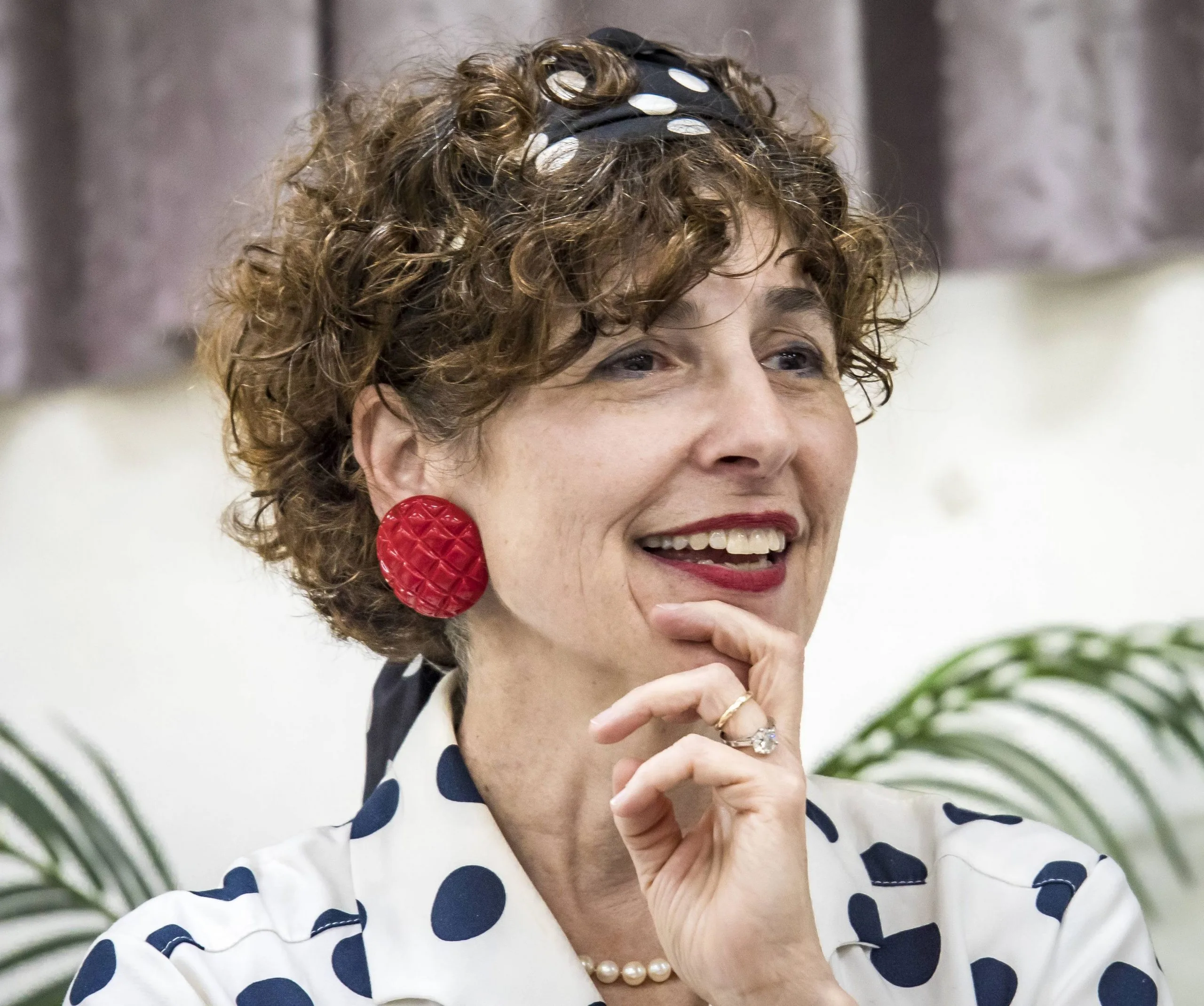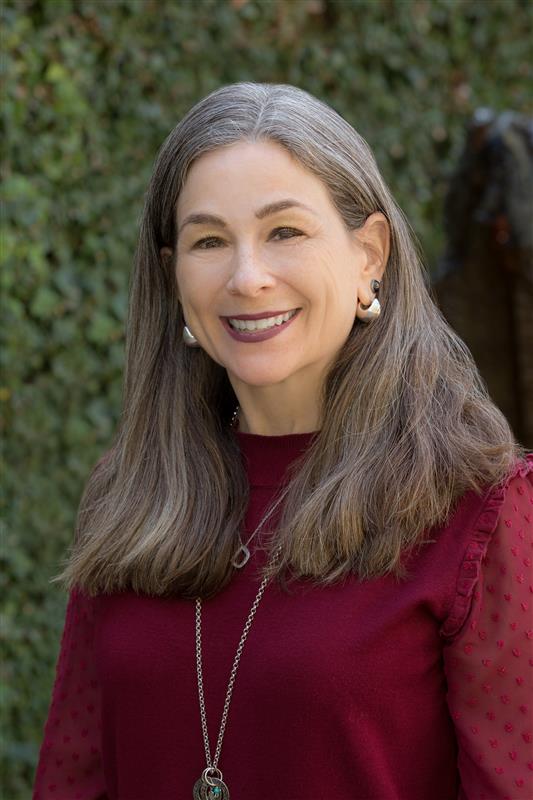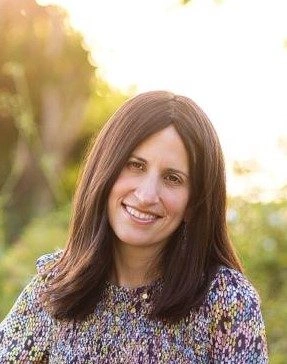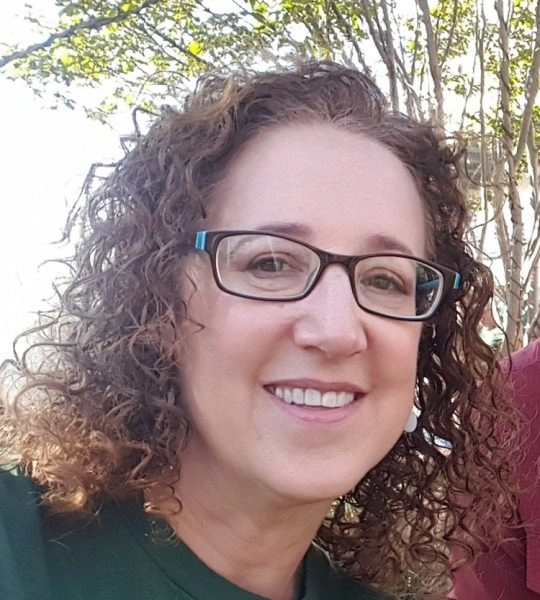Two more stories are told regarding food distribution to poor people – one about Binyamin the Tzadik and one about Munbaz the king. What are the minimum sizes of courtyards, fields, and gardens for one resident to insist that the other person who shares the property split it into two separate parts? What about dividing a bathhouse, hall, tallit, and other similar items? Only a sefer Torah can never be split. A discussion ensues regarding the size of a courtyard (4 square cubits) – does it include the entranceway or not? Each house gets an additional four cubits outside their door for unloading. If one house has more doors, do they get more of the courtyard? How exactly does it get divided? Various other situations are discussed – what if there is a portico and one can use the portico for unloading, instead of the space outside one’s entrance? Various issues are raised about shared courtyards that lead to an alley. Does one have the right to open an entrance to a different alley without the approval of those who already have access to the alley? Can one close up an entrance from one’s courtyard to the alleyway because it may cause others to walk farther to get to the alley? Does it depend on whether or not the person lives in the inner part of the alley?
Bava Batra
Masechet Bava Batra is sponsored by Lori Stark in loving memory of her mother in law, Sara Shapiro z”l and her father Nehemiah Sosewitz z”l.
This week’s learning is sponsored by Robert and Paula Cohen in loving memory of Joseph Cohen, Yosef ben Moshe HaCohen, z”l. “He was hard working, loved to sing, esp. as a chazan, and was very dedicated to his family and community.”
Want to dedicate learning? Get started here:

Today’s daily daf tools:
Bava Batra
Masechet Bava Batra is sponsored by Lori Stark in loving memory of her mother in law, Sara Shapiro z”l and her father Nehemiah Sosewitz z”l.
This week’s learning is sponsored by Robert and Paula Cohen in loving memory of Joseph Cohen, Yosef ben Moshe HaCohen, z”l. “He was hard working, loved to sing, esp. as a chazan, and was very dedicated to his family and community.”
Today’s daily daf tools:
Delve Deeper
Broaden your understanding of the topics on this daf with classes and podcasts from top women Talmud scholars.
New to Talmud?
Check out our resources designed to help you navigate a page of Talmud – and study at the pace, level and style that fits you.
The Hadran Women’s Tapestry
Meet the diverse women learning Gemara at Hadran and hear their stories.
Bava Batra 11
דְּלָא סַיְּימוּהָ קַמֵּיהּ.
those who reported the story to him did not conclude it before him; consequently, Rav Ami was not informed that Rava had indeed given the money to the gentile poor.
תַּנְיָא: אָמְרוּ עָלָיו עַל בִּנְיָמִין הַצַּדִּיק, שֶׁהָיָה מְמוּנֶּה עַל קוּפָּה שֶׁל צְדָקָה; פַּעַם אַחַת בָּאתָה אִשָּׁה לְפָנָיו בִּשְׁנֵי בַצּוֹרֶת, אָמְרָה לוֹ: רַבִּי, פַּרְנְסֵנִי! אָמַר לָהּ: הָעֲבוֹדָה, שֶׁאֵין בְּקוּפָּה שֶׁל צְדָקָה כְּלוּם! אָמְרָה לוֹ: רַבִּי, אִם אֵין אַתָּה מְפַרְנְסֵנִי, הֲרֵי אִשָּׁה וְשִׁבְעָה בָּנֶיהָ מֵתִים! עָמַד וּפִרְנְסָהּ מִשֶּׁלּוֹ. לְיָמִים חָלָה וְנָטָה לָמוּת, אָמְרוּ מַלְאֲכֵי הַשָּׁרֵת לִפְנֵי הַקָּדוֹשׁ בָּרוּךְ הוּא: רִבּוֹנוֹ שֶׁל עוֹלָם, אַתָּה אָמַרְתָּ: כׇּל הַמְקַיֵּים נֶפֶשׁ אַחַת מִיִּשְׂרָאֵל, כְּאִילּוּ קִיֵּים עוֹלָם מָלֵא; וּבִנְיָמִין הַצַּדִּיק, שֶׁהֶחֱיָה אִשָּׁה וְשִׁבְעָה בָּנֶיהָ, יָמוּת בְּשָׁנִים מוּעָטוֹת הַלָּלוּ? מִיָּד קָרְעוּ לוֹ גְּזַר דִּינוֹ. תָּנָא: הוֹסִיפוּ לוֹ עֶשְׂרִים וּשְׁתַּיִם שָׁנָה עַל שְׁנוֹתָיו.
§ It is taught in a baraita: The following was said about Binyamin the righteous, who was appointed supervisor over the charity fund. Once, a woman came before him during years of drought and said to him: My master, sustain me. He said to her: I swear by the Temple service that there is nothing left in the charity fund. She said to him: My master, if you do not sustain me, a woman and her seven sons will die. He arose and sustained her with his own funds. After some time, he fell deathly ill. The ministering angels said to the Holy One, Blessed be He: Master of the Universe, You said that anyone who preserves a single life in Israel is regarded as if he has preserved an entire world. Should then Binyamin the righteous, who saved a woman and her seven sons, die after these few years, still in his youth? They immediately tore up his sentence. A Sage taught: They added twenty-two years to his life.
תָּנוּ רַבָּנַן: מַעֲשֶׂה בְמוֹנְבַּז הַמֶּלֶךְ, שֶׁבִּזְבֵּז אוֹצְרוֹתָיו וְאוֹצְרוֹת אֲבוֹתָיו בִּשְׁנֵי בַּצּוֹרֶת, וְחָבְרוּ עָלָיו אֶחָיו וּבֵית אָבִיו, וְאָמְרוּ לוֹ: אֲבוֹתֶיךָ גָּנְזוּ וְהוֹסִיפוּ עַל שֶׁל אֲבוֹתָם, וְאַתָּה מְבַזְבְּזָם! אָמַר לָהֶם: אֲבוֹתַי גָּנְזוּ לְמַטָּה, וַאֲנִי גָּנַזְתִּי לְמַעְלָה – שֶׁנֶּאֱמַר: ״אֱמֶת מֵאֶרֶץ תִּצְמָח, וְצֶדֶק מִשָּׁמַיִם נִשְׁקָף״. אֲבוֹתַי גָּנְזוּ בִּמְקוֹם שֶׁהַיָּד שׁוֹלֶטֶת בּוֹ, וַאֲנִי גָּנַזְתִּי בִּמְקוֹם שֶׁאֵין הַיָּד שׁוֹלֶטֶת בּוֹ – שֶׁנֶּאֱמַר: ״צֶדֶק וּמִשְׁפָּט מְכוֹן כִּסְאֶךָ״.
The Sages taught: There was an incident involving King Munbaz, who liberally gave away his treasures and the treasures of his ancestors in the years of drought, distributing the money to the poor. His brothers and his father’s household joined together against him to protest against his actions, and they said to him: Your ancestors stored up money in their treasuries and added to the treasures of their ancestors, and you are liberally distributing it all to the poor. King Munbaz said to them: Not so, my ancestors stored up below, whereas I am storing above, as it is stated: “Truth will spring out of the earth and righteousness will look down from heaven” (Psalms 85:12), meaning that the righteous deeds that one has performed are stored up in heaven. My ancestors stored up treasures in a place where the human hand can reach, and so their treasures could have been robbed, whereas I am storing up treasures in a place where the human hand cannot reach, and so they are secure, as it is stated: “Righteousness and justice are the foundation of Your throne” (Psalms 89:15).
אֲבוֹתַי גָּנְזוּ דָּבָר שֶׁאֵין עוֹשֶׂה פֵּירוֹת, וַאֲנִי גָּנַזְתִּי דָּבָר שֶׁעוֹשֶׂה פֵּירוֹת – שֶׁנֶּאֱמַר: ״אִמְרוּ צַדִּיק כִּי טוֹב, כִּי פְרִי מַעַלְלֵיהֶם יֹאכֵלוּ״. אֲבוֹתַי גָּנְזוּ [אוֹצְרוֹת] מָמוֹן, וַאֲנִי גָּנַזְתִּי אוֹצְרוֹת נְפָשׁוֹת – שֶׁנֶּאֱמַר: ״פְּרִי צַדִּיק עֵץ חַיִּים, וְלוֹקֵחַ נְפָשׁוֹת חָכָם״. אֲבוֹתַי גָּנְזוּ לַאֲחֵרִים, וַאֲנִי גָּנַזְתִּי לְעַצְמִי – שֶׁנֶּאֱמַר: ״וּלְךָ תִּהְיֶה צְדָקָה״. אֲבוֹתַי גָּנְזוּ לָעוֹלָם הַזֶּה, וַאֲנִי גָּנַזְתִּי לָעוֹלָם הַבָּא – שֶׁנֶּאֱמַר: ״וְהָלַךְ לְפָנֶיךָ צִדְקֶךָ, כְּבוֹד ה׳ יַאַסְפֶךָ״.
My ancestors stored up something that does not generate profit, as money sitting in a treasury does not increase, whereas I am storing up something that generates profit, as it is stated: “Say of the righteous, that it shall be well with them, for they shall eat the fruit of their doings” (Isaiah 3:10). My ancestors stored up treasures of money, whereas I am storing up treasures of souls, as it is stated: “The fruit of the righteous is a tree of life, and he that wins souls is wise” (Proverbs 11:30). My ancestors stored up for others, for their sons and heirs, when they themselves would pass from this world, whereas I am storing up for myself, as it is stated: “And it shall be as righteousness to you” (Deuteronomy 24:13). My ancestors stored up for this world, whereas I am storing up for the World-to-Come, as it is stated: “And your righteousness shall go before you, the glory of the Lord shall be your rearguard” (Isaiah 58:8).
וְאִם קָנָה בָּהּ בֵּית דִּירָה – הֲרֵי הוּא כְּאַנְשֵׁי הָעִיר. מַתְנִיתִין דְּלָא כְּרַבָּן שִׁמְעוֹן בֶּן גַּמְלִיאֵל – דְּתַנְיָא, רַבָּן שִׁמְעוֹן בֶּן גַּמְלִיאֵל אוֹמֵר: אִם קָנָה בָּהּ קַרְקַע כׇּל שֶׁהוּא, הֲרֵי הוּא כְּאַנְשֵׁי הָעִיר.
§ The Gemara resumes its analysis of the mishna, which taught that one must reside in a place for twelve months in order to be considered a resident for the purposes of issues such as paying taxes. But if he bought himself a residence in the city, he is immediately considered like one of the people of the city. The Gemara comments: The mishna is not in accordance with the opinion of Rabban Shimon ben Gamliel, as it is taught in a baraita that Rabban Shimon ben Gamliel says: If he bought any amount of land in the city, and not necessarily a residence, he is immediately considered like one of the people of the city.
וְהָא תַּנְיָא, רַבָּן שִׁמְעוֹן בֶּן גַּמְלִיאֵל אוֹמֵר: אִם קָנָה שָׁם קַרְקַע הָרְאוּיָה לְבֵית דִּירָה – הֲרֵי הוּא כְּאַנְשֵׁי הָעִיר! תְּרֵי תַּנָּאֵי, וְאַלִּיבָּא דְּרַבָּן שִׁמְעוֹן בֶּן גַּמְלִיאֵל.
The Gemara asks: But isn’t it taught otherwise in a different baraita: Rabban Shimon ben Gamliel says: If one bought land that is suitable for a residence, he is immediately considered like one of the people of the city. This contradicts the first baraita. The Gemara answers: This is a dispute between two tanna’im and they disagree with regard to the opinion of Rabban Shimon ben Gamliel.
מַתְנִי׳ אֵין חוֹלְקִין אֶת הֶחָצֵר – עַד שֶׁיְּהֵא אַרְבַּע אַמּוֹת לָזֶה, וְאַרְבַּע אַמּוֹת לָזֶה. וְלֹא אֶת הַשָּׂדֶה – עַד שֶׁיְּהֵא בָּהּ תִּשְׁעָה קַבִּין לָזֶה, וְתִשְׁעָה קַבִּין לָזֶה. רַבִּי יְהוּדָה אוֹמֵר: עַד שֶׁיְּהֵא בָּהּ תִּשְׁעַת חֲצָיֵי קַבִּין לָזֶה, וְתִשְׁעַת חֲצָיֵי קַבִּין לָזֶה. וְלֹא אֶת הַגִּינָּה – עַד שֶׁיְּהֵא בָּהּ חֲצִי קַב לָזֶה, וַחֲצִי קַב לָזֶה. רַבִּי עֲקִיבָא אוֹמֵר: בֵּית רוֹבַע.
MISHNA: The court does not divide a courtyard at the request of one of the joint owners unless there will be in it four by four cubits for this one and four by four cubits for that one, i.e., this minimum area for each of the joint owners. And the court does not divide a jointly owned field unless there is space in it to plant nine kav of seed for this one and nine kav of seed for that one. Rabbi Yehuda says: The court does not divide a field unless there is space in it to plant nine half-kav of seed for this one and nine half-kav of seed for that one. And the court does not divide a jointly owned garden unless there is space in it to plant a half-kav of seed for this one and a half-kav of seed for that one. Rabbi Akiva says that half that amount is sufficient, i.e., the area required for sowing a quarter-kav of seed [beit rova].
וְלֹא אֶת הַטְּרַקְלִין, וְלֹא אֶת הַמּוֹרָן, וְלֹא אֶת הַשּׁוֹבָךְ, וְלֹא אֶת הַטַּלִּית, וְלֹא אֶת הַמֶּרְחָץ, וְלֹא אֶת בֵּית הַבַּד, וְלֹא אֶת בֵּית הַשְּׁלָחִין – עַד שֶׁיְּהֵא בָּהֶן כְּדַי לָזֶה וּכְדַי לָזֶה. זֶה הַכְּלָל: כׇּל שֶׁיֵּחָלֵק, וּשְׁמוֹ עָלָיו – חוֹלְקִין, וְאִם לָאו – אֵין חוֹלְקִין.
Similarly, the court does not divide a hall [hateraklin], a drawing room, a dovecote, a cloak, a bathhouse, an olive press, and an irrigated field unless there is enough for this one to use the property in the usual manner and enough for that one to use the property in the usual manner. This is the principle: Anything for which when it is divided, each of the parts is large enough to retain the name of the original item, the court divides it. But if the parts will not retain the original name, the court does not divide it.
אֵימָתַי – בִּזְמַן שֶׁאֵין שְׁנֵיהֶם רוֹצִים; אֲבָל בִּזְמַן שֶׁשְּׁנֵיהֶם רוֹצִים, אֲפִילּוּ פָּחוֹת מִכָּאן – יַחְלוֹקוּ. וְכִתְבֵי הַקֹּדֶשׁ, אַף עַל פִּי שֶׁשְּׁנֵיהֶם רוֹצִים – לֹא יַחְלוֹקוּ.
When does this rule apply? It applies when the joint owners do not both wish to divide the item; when only one of the owners wishes to divide the property, he cannot force the other to do so. But when both of them wish to divide the item, they may divide it, even if each of the owners will receive less than the amounts specified above. But in the case of sacred writings, i.e., a scroll of any of the twenty-four books of the Bible, that were inherited by two people, they may not divide them, even if both of them wish to do so, because it would be a show of disrespect to cut the scroll in half.
גְּמָ׳ אָמַר רַבִּי אַסִּי אָמַר רַבִּי יוֹחָנָן: אַרְבַּע אַמּוֹת שֶׁאָמְרוּ – חוּץ מִשֶּׁל פְּתָחִים. תַּנְיָא נָמֵי הָכִי: אֵין חוֹלְקִים אֶת הֶחָצֵר – עַד שֶׁיְּהֵא בָּהּ שְׁמוֹנֶה אַמּוֹת לָזֶה, וּשְׁמוֹנֶה אַמּוֹת לָזֶה. וְהָא אֲנַן תְּנַן: אַרְבַּע אַמּוֹת לָזֶה, וְאַרְבַּע אַמּוֹת לָזֶה! אֶלָּא שְׁמַע מִינַּהּ – כִּדְרַבִּי אַסִּי; שְׁמַע מִינַּהּ.
GEMARA: Rabbi Asi says that Rabbi Yoḥanan says: The four cubits of the courtyard which they said each of the joint owners must receive is in addition to the space in front of the entrances to each of the houses that is assigned to the owner of the house for loading and unloading. That opinion is also taught in a baraita: The court does not divide a courtyard unless its area is sufficient so that there will be in it eight cubits for this one and eight cubits for that one. The Gemara asks: But didn’t we learn in the mishna that it suffices that there be four cubits for this one and four cubits for that one? Rather, conclude from it that the baraita was taught in accordance with the opinion of Rabbi Asi. The Gemara affirms: Conclude from it that it is so.
וְאִיכָּא דְּרָמֵי לְהוּ מִירְמֵא – תְּנַן: אֵין חוֹלְקִין אֶת הֶחָצֵר, עַד שֶׁיְּהֵא בָּהּ אַרְבַּע אַמּוֹת לָזֶה, וְאַרְבַּע אַמּוֹת לָזֶה. וְהָתַנְיָא: שְׁמוֹנֶה אַמּוֹת לָזֶה, וּשְׁמוֹנֶה אַמּוֹת לָזֶה! אָמַר רַבִּי אַסִּי אָמַר רַבִּי יוֹחָנָן: אַרְבַּע אַמּוֹת שֶׁאָמְרוּ – חוּץ מִשֶּׁל פְּתָחִים.
And there are those who raise the baraita as a contradiction to what is taught in the mishna and use the previously mentioned point to reconcile the two texts. We learned in the mishna: The court does not divide a courtyard at the request of one of the joint owners unless there will be in it four by four cubits for this one and four by four cubits for that one. But isn’t it taught in a baraita: The court does not divide a courtyard unless there are eight cubits for this one and eight cubits for that one? About this Rabbi Asi said that Rabbi Yoḥanan said: The four cubits of the courtyard which they said each of the joint owners must receive is in addition to the space in front of the entrances to each of the houses.
אָמַר רַב הוּנָא: חָצֵר מִתְחַלֶּקֶת לְפִי פְּתָחֶיהָ. וְרַב חִסְדָּא אָמַר: נוֹתְנִין אַרְבַּע אַמּוֹת לְכׇל פֶּתַח וּפְתַח, וְהַשְּׁאָר חוֹלְקִין בְּשָׁוֶה.
Further with regard to the division of a courtyard, Rav Huna says: A courtyard is divided according to its entrances. Each of the owners receives a share of the courtyard in proportion to the number of entrances that his house has opening onto the courtyard. And Rav Ḥisda says: Four cubits are allotted to each of the owners for each and every entrance, and the rest of the courtyard is then divided equally between them.
תַּנְיָא כְּווֹתֵיהּ דְּרַב חִסְדָּא: פְּתָחִים שֶׁבֶּחָצֵר – יֵשׁ לָהֶן אַרְבַּע אַמּוֹת. הָיָה לָזֶה פֶּתַח אֶחָד, וְלָזֶה שְׁנֵי פְתָחִים; זֶה שֶׁיֵּשׁ לוֹ פֶּתַח אֶחָד – נוֹטֵל אַרְבַּע אַמּוֹת, וְזֶה שֶׁיֵּשׁ לוֹ שְׁנֵי פְתָחִים – נוֹטֵל שְׁמוֹנֶה אַמּוֹת; וְהַשְּׁאָר חוֹלְקִין בְּשָׁוֶה. הָיָה לָזֶה פֶּתַח רָחָב שְׁמוֹנֶה אַמּוֹת – נוֹטֵל שְׁמוֹנֶה אַמּוֹת כְּנֶגֶד הַפֶּתַח, וְאַרְבַּע אַמּוֹת בֶּחָצֵר. אַרְבַּע אַמּוֹת בֶּחָצֵר – מַאי עֲבִידְתַּיְיהוּ? אָמַר אַבָּיֵי, הָכִי קָאָמַר: נוֹטֵל שְׁמוֹנֶה אַמּוֹת בְּאוֹרֶךְ הֶחָצֵר, וְאַרְבַּע אַמּוֹת בְּרוֹחַב הֶחָצֵר.
The Gemara comments: It is taught in a baraita in accordance with the opinion of Rav Ḥisda: Each of the entrances opening to a courtyard is allotted four cubits. If this one has one entrance and that one has two entrances, the one who has one entrance takes four cubits, and the one who has two entrances takes eight cubits, and they divide the rest of the courtyard equally between them. If this one had an entrance eight cubits wide, he takes eight cubits adjacent to the entrance and four cubits in the courtyard. The Gemara expresses surprise: What are these four cubits in the courtyard doing here? Doesn’t it all depend on the size of the courtyard? Abaye said: This is what the baraita is saying: For the entrance he takes eight cubits along the length of the courtyard and four cubits along the width of the courtyard. In other words, he takes a strip four cubits wide along the entire length of his entrance.
אָמַר אַמֵּימָר: הַאי פֵּירָא דְסוּפְלֵי – יֵשׁ לוֹ אַרְבַּע אַמּוֹת לְכׇל רוּחַ וָרוּחַ. וְלָא אֲמַרַן אֶלָּא דְּלָא מְיַיחַד לֵיהּ פִּתְחָא,
Ameimar says: A pit for holding animal food [peira desuflei] has four cubits on each and every side so that there will be sufficient space for the animals to stand. The Gemara adds: And we said this only when the pit has no special entrance to reach it, but rather it is accessed from all sides.
אֲבָל מְיַיחַד לֵיהּ פִּיתְחָא – אֵין לוֹ אֶלָּא אַרְבַּע אַמּוֹת לִפְנֵי פִתְחוֹ.
But if he designates an entrance leading to this pit and does not approach it from all sides, he has four cubits only in front of his entrance.
אָמַר רַב הוּנָא: אַכְסַדְרָה – אֵין לָהּ אַרְבַּע אַמּוֹת. טַעְמָא מַאי – מִשּׁוּם פֵּירוּק מַשָּׂאוֹ; הָכָא – אֶפְשָׁר דְּעָיֵיל לְגַוַּאי וּמְפָרַק. מֵתִיב רַב שֵׁשֶׁת: אֶחָד שַׁעֲרֵי בָתִּים, וְאֶחָד שַׁעֲרֵי אַכְסַדְרָאוֹת – יֵשׁ לָהֶן אַרְבַּע אַמּוֹת! כִּי תַּנְיָא הָהִיא, בְּאַכְסַדְרָה דְּבֵי רַב. אַכְסַדְרָה דְּבֵי רַב פְּשִׁיטָא – אִידְּרוֹנָא מְעַלְּיָא הוּא! אֶלָּא בְּאַכְסַדְרָה רוֹמָיְיֹתַא.
Rav Huna says: A portico [akhsadra] that opens onto a courtyard does not have the adjoining four cubits. The Gemara explains: What is the reason that four cubits were granted for each entrance? The four cubits were granted so that the owner would have room for unloading his animal of its burden. Here he can go inside the portico and unload. Rav Sheshet raises an objection from a baraita: Both gates of houses and gates of porticos have the adjoining four cubits for unloading. The Gemara answers: When that baraita is taught, it is specifically with regard to the portico of a study hall, which is closed and is not used for unloading burdens. The Gemara expresses surprise at this answer: It is obvious that this is the halakha governing the portico of a study hall, as it is a proper room. Rather, the baraita is referring to a Roman portico, which is more open than the portico of a study hall, but also not used for unloading.
תָּנוּ רַבָּנַן: בֵּית שַׁעַר, אַכְסַדְרָה וּמִרְפֶּסֶת – יֵשׁ לָהֶן אַרְבַּע אַמּוֹת. הָיוּ חֲמִשָּׁה בָּתִּים פְּתוּחִין לְמִרְפֶּסֶת – אֵין לָהֶן אֶלָּא אַרְבַּע אַמּוֹת בִּלְבַד. בְּעָא מִינֵּיהּ רַבִּי יוֹחָנָן מֵרַבִּי יַנַּאי: לוּל שֶׁל תַּרְנְגוֹלִין – יֵשׁ לוֹ אַרְבַּע אַמּוֹת, אוֹ אֵין לוֹ אַרְבַּע אַמּוֹת? אֲמַר לֵיהּ: טַעְמָא מַאי – מִשּׁוּם פֵּירוּק מַשָּׂאוֹ; הָכָא – מְטַפֵּס וְעוֹלֶה, מְטַפֵּס וְיוֹרֵד.
The Sages taught in a baraita: A gatehouse, a portico, and a balcony with a staircase leading down to the courtyard have the adjoining four cubits for unloading. Even if five houses open onto the balcony, they only have four cubits in front of the entrance to the staircase that leads to the balcony. Rabbi Yoḥanan asked Rabbi Yannai: Does a chicken coop that also has a staircase have four cubits or does it not have four cubits? Rabbi Yannai said to him: What is the reason that four cubits are granted? It is so that the owner will have room for unloading the burden of his animal. Here this space is not needed, as the chickens climb up to get into the coop and climb down to get out. No additional place is required for the owner to stand alongside them.
בְּעָא מִינֵּיהּ רָבָא מֵרַב נַחְמָן: בַּיִת חֶצְיוֹ מְקוֹרֶה וְחֶצְיוֹ אֵינוֹ מְקוֹרֶה – יֵשׁ לוֹ אַרְבַּע אַמּוֹת, אוֹ אֵין לוֹ אַרְבַּע אַמּוֹת? אֲמַר לֵיהּ: אֵין לוֹ אַרְבַּע אַמּוֹת; לָא מִבַּעְיָא קֵירוּיוֹ מִלְּגָיו – דְּאֶפְשָׁר דְּעָיֵיל לְגַוַּאי וּמְפָרֵק; אֶלָּא אֲפִילּוּ קֵירוּיוֹ כְּלַפֵּי חוּץ – אֶפְשָׁר דְּעָיֵיל לְגַוַּאי וּמְפָרֵק.
Rava asked Rav Naḥman: If a house is half roofed and half unroofed, does it have the adjoining four cubits or does it not have the four cubits? Rav Naḥman said to him: It does not have the four cubits. The Gemara comments: It is not necessary to state this halakha when the house’s roofing is over the inside portion of the house, since it is possible for the owner to go inside and unload his animal. Rather, even when the house’s roofing is over the outside portion of the house, it is not given four cubits, as even in such a case it is possible for the owner to go inside and unload his animal there.
בְּעָא מִינֵּיהּ רַב הוּנָא מֵרַבִּי אַמֵּי: אֶחָד מִבְּנֵי מָבוֹי, שֶׁבִּקֵּשׁ לְהַחֲזִיר פִּתְחוֹ לְמָבוֹי אַחֵר – בְּנֵי מָבוֹי מְעַכְּבִין עָלָיו, אוֹ אֵין מְעַכְּבִין עָלָיו? אֲמַר לֵיהּ: בְּנֵי מָבוֹי מְעַכְּבִין עָלָיו.
§ Rav Huna asked Rabbi Ami: If one of the residents of an alleyway onto which several courtyards open wishes to alter his entrance to a different alleyway, i.e., to make an entrance to his courtyard that will open onto a different alleyway, can the residents of the other alleyway prevent him from opening this entrance, or can they not prevent him from doing so? Rabbi Ami said to him: The residents of the other alleyway can prevent him from making the change.
אַכְסַנְיָא – לְפִי בְּנֵי אָדָם מִתְחַלֶּקֶת, אוֹ לְפִי פְתָחִים מִתְחַלֶּקֶת? אֲמַר לֵיהּ: לְפִי בְּנֵי אָדָם מִתְחַלֶּקֶת. תַּנְיָא נָמֵי הָכִי: זֶבֶל שֶׁבֶּחָצֵר – מִתְחַלֶּקֶת לְפִי פְתָחִים. אַכְסַנְיָא – לְפִי בְּנֵי אָדָם.
Rav Huna further asked: When a king issues a billeting order to the residents of a courtyard, obligating them to house his soldiers in their homes, is the burden divided according to the number of people in each household, or is it divided according to the number of entrances that each house has opening into the courtyard? Rabbi Ami said to him: It is divided according to the number of people in each household. The Gemara comments: That opinion is also taught in a baraita: The dung in a courtyard which the residents wish to use is divided among them according to the number of entrances that open into the courtyard, whereas billeting is divided according to the number of people in each household.
אָמַר רַב הוּנָא: אֶחָד מִבְּנֵי מָבוֹי שֶׁבִּקֵּשׁ לִסְתּוֹם כְּנֶגֶד פִּתְחוֹ – בְּנֵי מָבוֹי מְעַכְּבִין עָלָיו, שֶׁמַּרְבֶּה עֲלֵיהֶן אֶת הַדֶּרֶךְ.
Rav Huna says: If one of the residents of an alleyway wishes to close off an area adjacent to his entrance, i.e., to build a structure in the alleyway adjacent to the entrance to his courtyard, the residents of the alleyway can prevent him from doing so. This is because it will increase the way for them, since they will have to circumvent the structure when going to and from their homes.
מֵיתִיבִי: חָמֵשׁ חֲצֵרוֹת פְּתוּחוֹת לְמָבוֹי – כּוּלָּן מִשְׁתַּמְּשׁוֹת עִם הַחִיצוֹנָה, וְהַחִיצוֹנָה מִשְׁתַּמֶּשֶׁת לְעַצְמָהּ. וְהַשְּׁאָר מִשְׁתַּמְּשׁוֹת עִם הַשְּׁנִיָּה; וְהַשְּׁנִיָּה מִשְׁתַּמֶּשֶׁת לְעַצְמָהּ וּמִשְׁתַּמֶּשֶׁת עִם הַחִיצוֹנָה.
The Gemara raises an objection from a baraita: If five courtyards open onto an alleyway, all the residents of the alleyway may use that part of the alleyway that faces the entrance to the outermost courtyard, and the residents of the outermost courtyard may use only that part of the alleyway adjacent to its own entrance. And similarly, the residents of the other courtyards may use that part of the alleyway that faces the second courtyard, i.e., the one next to the outermost courtyard, and the residents of the second courtyard may use that part of the alleyway adjacent to its own entrance and they may use that part of the alleyway facing the outermost courtyard.
נִמְצֵאת פְּנִימִית מִשְׁתַּמֶּשֶׁת לְעַצְמָהּ, וּמִשְׁתַּמֶּשֶׁת עִם כׇּל אַחַת וְאַחַת.
The baraita continues: The outcome is that the residents of the innermost courtyard may use that part of the alleyway adjacent to its own entrance, and they may use that part of the alleyway facing each and every other courtyard as well. According to this analysis, it should be permitted for the owner of the innermost courtyard to close off the area in front of his courtyard, since he is the only one who has permission to use it.
תַּנָּאֵי הִיא. דְּתַנְיָא: אֶחָד מִבְּנֵי מָבוֹי שֶׁבִּקֵּשׁ לְהַחֲזִיר פִּתְחוֹ לְמָבוֹי אַחֵר – בְּנֵי מָבוֹי מְעַכְּבִין עָלָיו. הָיָה סָתוּם וּבִקֵּשׁ לְפוֹתְחוֹ – אֵין בְּנֵי מָבוֹי מְעַכְּבִין עָלָיו; דִּבְרֵי רַבִּי. רַבִּי שִׁמְעוֹן בֶּן אֶלְעָזָר אוֹמֵר: חָמֵשׁ חֲצֵרוֹת הַפְּתוּחוֹת לְמָבוֹי – כּוּלָּן מִשְׁתַּמְּשׁוֹת בַּמָּבוֹי זוֹ עִם זוֹ.
The Gemara answers: It is a dispute between tanna’im, as it is taught in a baraita: If one of the residents of an alleyway wishes to alter his entrance to a different alleyway, the residents of the other alleyway can prevent him from doing so. If there had been an entrance there beforehand which is now sealed and he wishes to open it, the residents of the other alleyway cannot prevent him from doing so; this is the statement of Rabbi Yehuda HaNasi. Rabbi Shimon ben Elazar says: If there are five courtyards which open onto an alleyway, the residents of all the courtyards may all use the alleyway with each other.
חֲצֵרוֹת מַאן דְּכַר שְׁמַיְיהוּ? חַסּוֹרֵי מִחַסְּרָא, וְהָכִי קָתָנֵי: וְכֵן חָמֵשׁ חֲצֵרוֹת הַפְּתוּחוֹת לְמָבוֹי – כּוּלָּן מִשְׁתַּמְּשׁוֹת עִם הַחִיצוֹנָה, וְהַחִיצוֹנָה מִשְׁתַּמֶּשֶׁת לְעַצְמָהּ וְכוּ׳; דִּבְרֵי רַבִּי. רַבִּי שִׁמְעוֹן בֶּן אֶלְעָזָר אוֹמֵר: חָמֵשׁ חֲצֵרוֹת הַפְּתוּחוֹת לְמָבוֹי – כּוּלָּם מִשְׁתַּמְּשׁוֹת בַּמָּבוֹי.
The Gemara expresses surprise about this last ruling: Courtyards, who mentioned anything about them? Why are they mentioned, considering that the baraita is not discussing the halakhot of courtyards? The Gemara answers: The baraita is incomplete and this is what it is teaching: Additionally, if there are five courtyards which open onto an alleyway, the residents of all the courtyards may all use the area facing the outermost courtyard, and the residents of the outermost one may use only the area facing their own entrance; this is the statement of Rabbi Yehuda HaNasi. Rabbi Shimon ben Elazar says: If there are five courtyards which open onto an alleyway, the residents of all the courtyards may all use the alleyway.
אָמַר מָר: הָיָה סָתוּם וּבִקֵּשׁ לְפוֹתְחוֹ – אֵין בְּנֵי מָבוֹי מְעַכְּבִין עָלָיו. אָמַר רָבָא: לֹא שָׁנוּ אֶלָּא שֶׁלֹּא פָּרַץ אֶת פַּצִּימָיו, אֲבָל פָּרַץ אֶת פַּצִּימָיו – בְּנֵי מָבוֹי מְעַכְּבִין עָלָיו. אֲמַר לֵיהּ אַבָּיֵי לְרָבָא, תַּנְיָא דִּמְסַיַּיע לָךְ:
The Gemara directs the discussion to the details mentioned in the baraita. The Master said: If there had been an entrance there beforehand that is now sealed and he wishes to open it, the residents of the other alleyway cannot prevent him from doing so. Rava says: This was taught only when he did not break its doorposts, i.e., when the doorposts remained intact even after the entrance was sealed. But if he sealed the entrance and broke its doorposts, thereby demonstrating that the entrance had been completely negated, the residents of the other alleyway can prevent him from opening a new entrance. Abaye said to Rava: A baraita is taught which supports you:






















